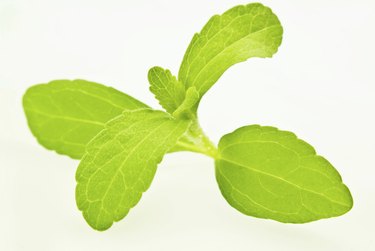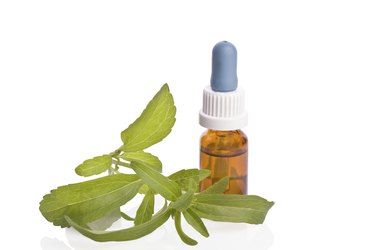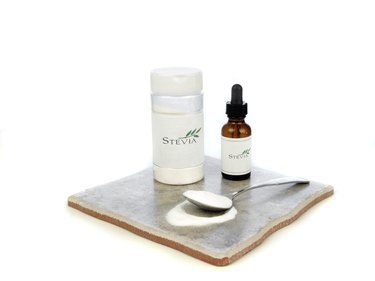Whole Leaf Stevia

Stevia is a South American herb that has been used for hundreds of years as a sweetener. It contains compounds called glycosides -- or more specifically, steviosides -- that produce the intensely sweet taste, but provide no calories. It can be used in its natural state, pulverizing the whole, dried stevia leaves, crumbling or crushing them into a green powder. The only processing involved in the production of this form of stevia is drying the leaves out, then using your fingers or a pestle to grind them up. It's like pulling herbs out of your own garden and using them in a recipe. No processing involved. Best of all, no pesticides are used on stevia because the plants are so sweet that no insects bother them.
Liquid Extract
Video of the Day

Liquid Stevia Extract is available as a clear liquid extract with a water, glycerin, alcohol or grapefruit base. The glycosides are extracted from the leaves using either water or alcohol and membrane filtration. Because it evaporates, no alcohol remains in the finished product. The liquid becomes clear rather than green because the extraction process removes the chlorophyll, and white glycosides remain. No bleach or other chemical whiteners should be used, according to the SweetLeaf Company.
Video of the Day
Dark Stevia Concentrate is a thick, dark brown liquid that makes a good substitute for brown sugar and molasses. It is made by boiling the stevia leaves in water, cooking them without any chemicals or alcohol, until the proper thickness or concentration is reached . The result is similar to a "reduction," which is a sauce that has been thickened by boiling off the liquid.
Powdered Extract

Powdered Stevia is a white, powdered extract, produced in bulk or in packets, and blended with a filler, usually fructooligosaccharides, or FOS, which is a plant based fiber. This is the most processed form of stevia. "Production of stevioside involves water extraction from the dried leaves, followed by clarification and crystalization processes. Most commercial processes consist of water extraction, decoloration, and purification using ion-exchange resins, electrolytic techniques, or precipitating agents," according to SteviaPowder.com.
Some powdered forms of stevia extract can contain maltodextrin, a food additive derived from cornstarch that may contain MSG. Although processing is involved, and a white powder is produced, many of the health properties of the stevia plant survive, making it a healthy alternative to sugar or sugar substitutes like Aspartame and Nutrasweet.